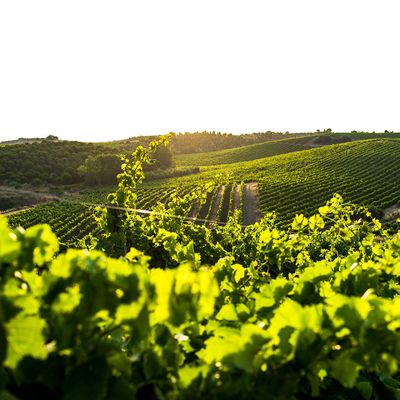
The Alentejo region in southern Portugal is home to incredible restaurants, great wineries, and overwhelming natural beauty.
Where to Stay
Previously a residential compound for the farmers who worked the surrounding land, São Lourenço do Barrocal (from $185) opened as a hotel in 2016 following years of renovations. Now, the nearly 2,000-acre property, which has stayed with the same family for eight generations, is home to 24 spacious rooms with shaded terraces and 16 family-friendly cottages (from one to three bedrooms), all subtly decorated with found objects and decked out with locally designed blankets and soaking tubs. The rustic feeling continues across the property: There’s a vegetable garden, a vineyard for the estate’s in-house wine production, and cattle grazing on the grounds.
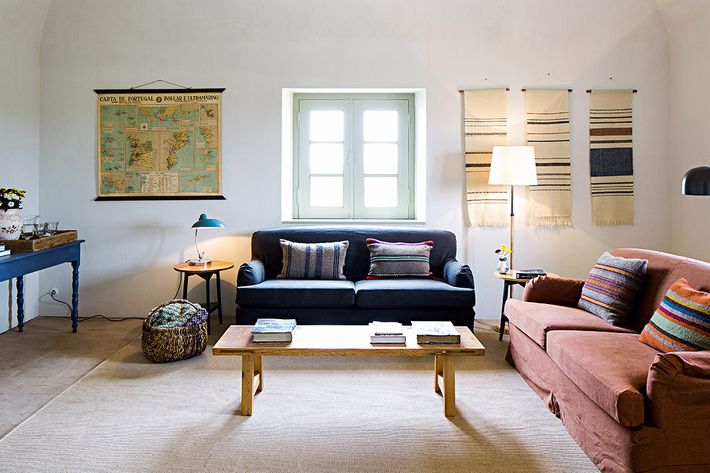
Seek solitude at Torre de Palma Wine Hotel (from $159) near Monforte, where the nearest inhabited building is kilometers away. The 19 individually decorated rooms are home to plenty of Instagrammable nooks: One has a library theme with bookshelf wallpaper, while another is more pared down, with lots of dark wood and antique furniture. There is a relaxing outdoor pool surrounded by olive groves that guests hang out in before dinner at Basilii, where you can try a few regional dishes.
The original Gothic building of Pousada Mosteiro do Crato (from $134) opened in the 14th century and was a monastery and a manor house before becoming a 24-key luxury hotel in 1995. In June 2016, a spa was added to the property’s inventory of amenities. On top of stress-busting aromatherapy massages and anti-aging facials, the spa has a Turkish hammam, Jacuzzi, and sauna. The elegance extends to the dining room, where Alentejano dishes are plated with sophistication, from the gazpacho with smoked ham and fresh grapes to the dogfish brightened with lots of coriander and served with fried bread.
Where to Eat
Discover the fine-dining scene of the Alentejo at L’and Vineyards’ modern restaurant, the only kitchen in this part of Portugal with a Michelin star. Executive chef Miguel Laffan typically features two styles of cooking (using ingredients sourced no more than 50 kilometers away): There are modern interpretations of traditional national dishes, like a stew of seafood caught in Portuguese waters, paired with perfectly crisped seaweed croquettes. Other offerings are informed by international flavors, like a tom yum koong soup topped with roasted scarlet prawns.
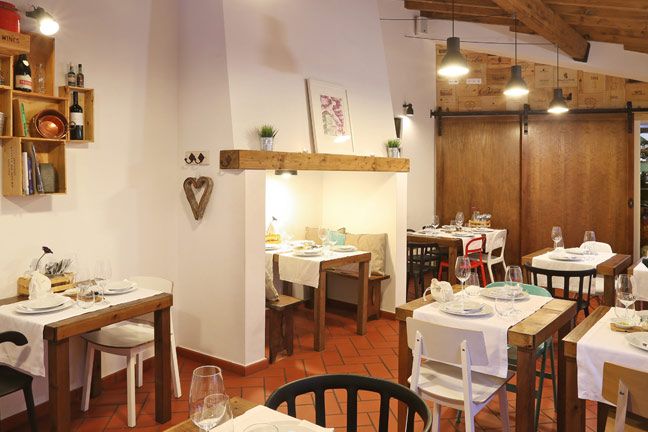
Mercearia Gadanha was founded as a specialty grocery shop in Estremoz in 2009 selling pata negra, cheese, homemade jams, and more; in 2013, the chef Michele Marques expanded it to include a quaint, rustic-feeling dining room. Pendant lights hang over wooden tables and mismatched chairs, where diners sit to try dishes made from local ingredients and inspired by Marques’s global travels and her native Brazil, like a playful passion-fruit mousse paired with a tart mango cream and drizzled with Pop Rocks. On the savory side, among the most popular menu items are the red-wine-braised black pork cheeks with mashed sweet potato and apple purée.
In the outskirts of Portalegre, book a reservation at Tomba Lobos. Chef José Júlio Vintém opened this whitewashed eatery in 2002, and it has been a hit ever since. The best thing about Tomba Lobos is the impressive size of its menu. Appetizers like crunchy green-bean tempura, garlicky soup with a poached egg, and the crisped pork lard with lemon juice and rosemary perfectly represent the breadth of Alentejano cooking. For main courses, there are a lot of gamey meats, from stewed pigeon and grilled venison steak to the chef’s partridge escabeche.
What to Do
Portuguese travel agency We Love Small Hotels organizes tours in the area, ranging from custom trips to walking excursions through historic villages to eight-day self-guided wine tours. A recent tour took food lovers to an olive-oil mill in Galegos to learn all about olive-oil production in the region — and participants traveled by horseback to get to the mill, passing through trails that were once used by smugglers going in and out of Spain. An add-on to that tour was a fishing excursion on the Guadiana River, which is home to a variety of species from eel to mullet to carp. It’s a serene experience that ends with a lunch of whatever you (or your guide) catch.
Learn all about the secrets of the regional kitchen with cooking classes at Convento do Espinheiro, a chichi hotel located just outside the ancient city of Évora. One of the more interesting courses is breadmaking. The dough you prepare will be slow-baked inside a 500-year-old wood-fire stone oven that was previously used by the very monks who lived there. There are also jam-making courses and advanced classes where you’ll learn to prepare more complex delicacies like sericaia, a lemony-cinnamony egg custard.
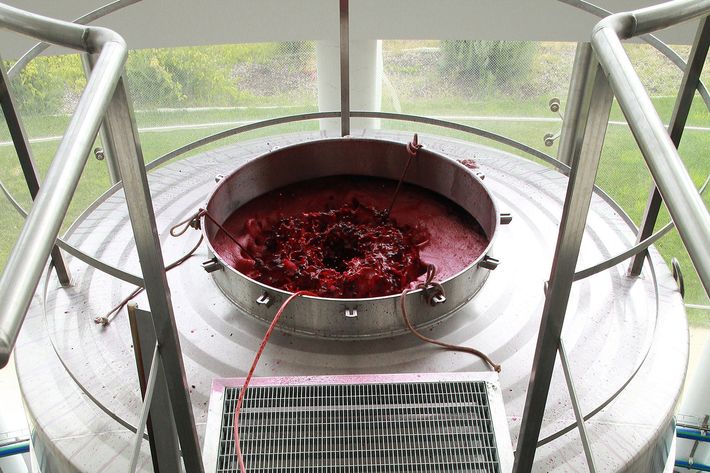
One of the most beautiful of the region’s many vineyards is Quinta do Quetzal, toward the south of the Alentejo. Owned by art collectors, this winery offers much more than just tastings of its robust Cabernet Sauvignon and its signature white, a rich, buttery Antão Vaz, made from a grape indigenous to this specific part of the Alentejo. When the property expanded in 2016, the new building included an airy restaurant overlooking the vineyards that serves health-conscious local cuisine, as well as a beautiful gallery dedicated to up-and-coming international artists including Pat O’Neill, Mika Rottenberg, and Jon Kessler. The exhibitions span everything from paintings and drawings to films.
Expert Tips
From Afonso Cruz, a novelist, artist, and musician who lives in an isolated village near Casa Branca.
I would recommend a restaurant near Santo António do Alcorrego called Tasca do Montinho. For me, it’s one of the best gastronomical experiences in Portugal. I would recommend trying their migas. There are lots of different types, always with olive oil, pork fat, bread, laurel, lots of garlic. There are migas of coriander, kidneys and brains, tomatoes, potatoes, bacalao, and mint, but the ones with wild asparagus are particularly good.
Not far from my hometown of Avis, you can visit the winery at Adega do Mouchão. They produce one of the best Portuguese wines. But you can also buy olive oil, honey, and brandy. It’s one of the oldest wineries in Portugal, only surpassed by a few Porto cellars. They still make the wine without relying on modern machinery. The grapes are crushed by foot, labels are glued on by hand, and there is no air-conditioning. The most expensive wine they sell comes from grapes that are not watered.
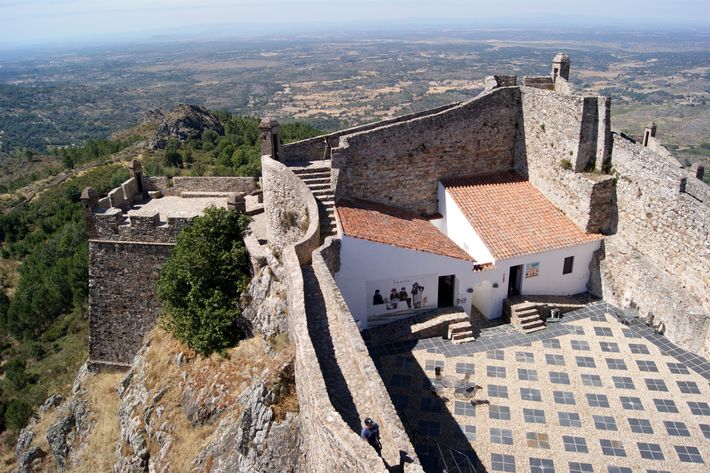
In the summer, visit Portagem, a village where you can swim in the Sever River, just under an old Roman bridge. A few kilometers away, on top of a mountain, is one of the most beautiful Portuguese historical villages, Marvão. From there, you have an amazing view of Alentejo’s montado (forest of cork oaks). Another point of interest is the thermal baths of Cabeço de Vide, visited in 2012 by NASA to investigate the waters as the potential birthplace of life on Earth.
Resources
Visit Alentejo is the official tourism website of the entire region.